
Download Poker
Half the battle of winning at poker begins with the knowledge how to play your starting hands. When you enter a pot with strong cards, not only do you avoid making tough decisions after the flop, but you also increase your chances of holding the best hand more frequently.
Whether you're just a beginner a seasoned player, this guide will help you sharpen your poker skills across various game types, variants, and tournaments, as well as provide valuable insights on the cards worth playing and how to use them skillfully to maximize your profits.
We will delve into the concept of position at the poker table, a vital aspect that often separates amateurs from pros. Understanding the nuances of different positions will be indispensable in your poker journey. So, let's dive in and elevate our poker game to new heights.
Players are dealt pocket cards (or hole cards). These cards can only be used by the player who receives them to create his/her own combinations, unlike the community cards, that are shared by all players.
In the early stages of the game, the stakes are usually low since the auction or bidding process has not yet started, and players have only paid the blinds or ante. The player's objective during this phase is to assess the potential of their hand for the upcoming draw.
In poker, starting hands can be classified as either suited or off-suited. A suited hand is one in which all of the cards are of the same suit, such as ♠A♠6. Suited hands are generally considered more valuable than off-suited hands because they have the potential to form flushes, which can be a strong hand. They are marked with S (A6s).
An off-suited hand, on the contrary, is one in which the cards are of different suits, such as ♥A♣6. They are marked with O (A6o). While off-suited hands are generally considered weaker, they can still hold value depending on the rank of the cards and other factors such as position and the actions of other players.
If you encountered a "+" sign, it might be referring to a range of hands rather than a specific combination. A range can be expressed by using a "+" sign to indicate that a player has all the hands that meet a certain criterion. For instance, if someone says they are raising with "A9+," it means they are raising with any hand that includes an Ace and a 9 or higher.
A connector, or connected starting hand, is a hand that contains two cards of rank order, either suited or unsuited. Hands like AK, KQ and 67 are connectors. Hands like 68 or T7 may sometimes be referred to as connectors they are more frequently referred to as “gappers”. Connectors are stronger than hands that are not connected as there is a possibility to hit straights.
Misunderstanding the value of betting position is considered as a rookie mistake. Even Texas Hold’em players who have a good understanding of hand values get in trouble when they bet out of position. By doing so, poker players drift into the deep waters by over-betting hands that are weaker than they believe. Read this guide carefully for better understand the concepts behind pre-flop betting.
The decision to raise or fold is always affected by bet position, so it’s an important concept to grasp. Bet position and hand selection are closely connected. Your placement in the betting sequence around the table - called table position or bet position - is pivotal to deciding which hands to play. The calculation changes each hand, as the dealer button and the blinds rotate around the table.
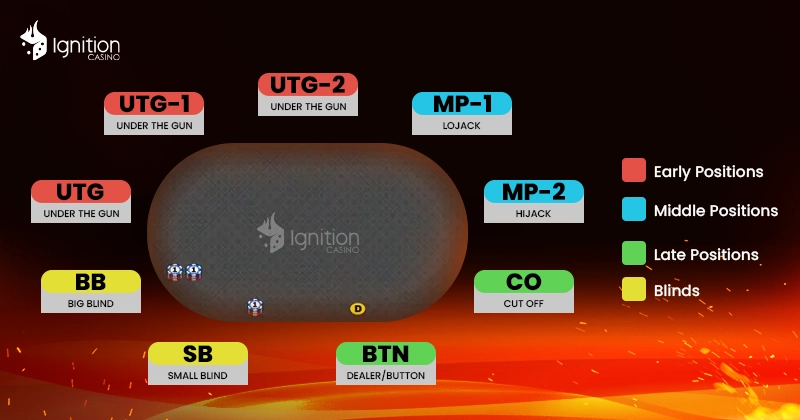
Players in earlier positions must act before those in later positions, and this can significantly impact the decisions they make during the hand.
For instance, players in early position typically require stronger starting hands since they will face more players acting after them, thus having to fold against potential bets.
In contrast, players in later positions have more information to work with and can afford to play weaker hands. A 10-player table has ten different positions, divided into four groups: early, middle, late, and blinds.
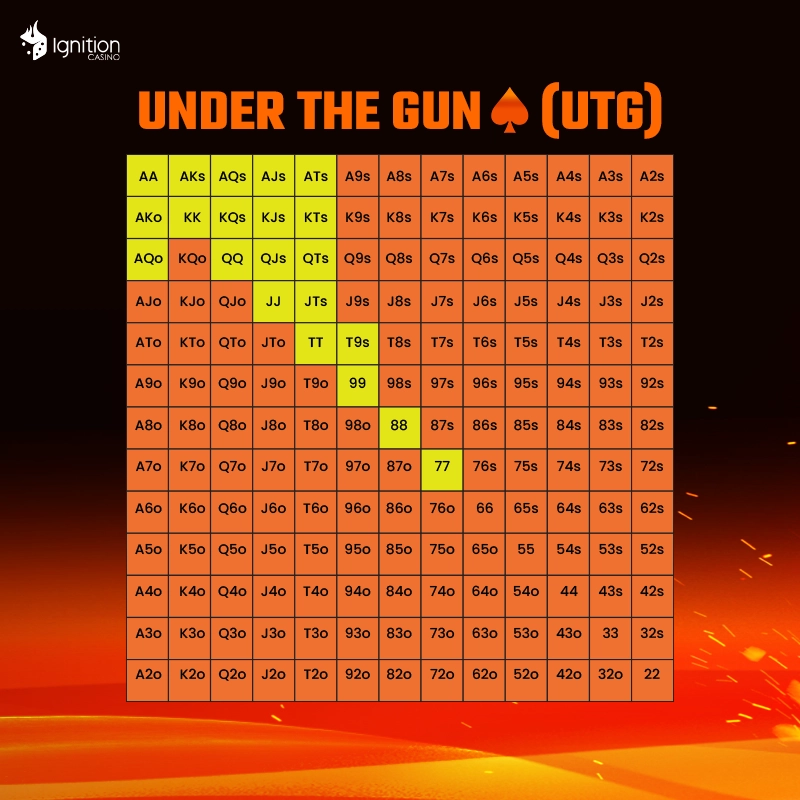
The players in this early position are the first ones to act in the preflop betting round. Playing profitably from these positions can be challenging since they have to act first preflop and will play just after the blinds in the post-flop rounds.
In early positions, it is important to exercise caution due to the limited information available about the actions of opponents. We recommend you play relatively tighter and focus on strong starting hands to minimize risk. Recommended hands to play include:
It is generally wise to fold weaker hands like low pairs (2-2 to 9-9), unsuited connectors, and low-suited aces (A-2 to A-9) in early positions.
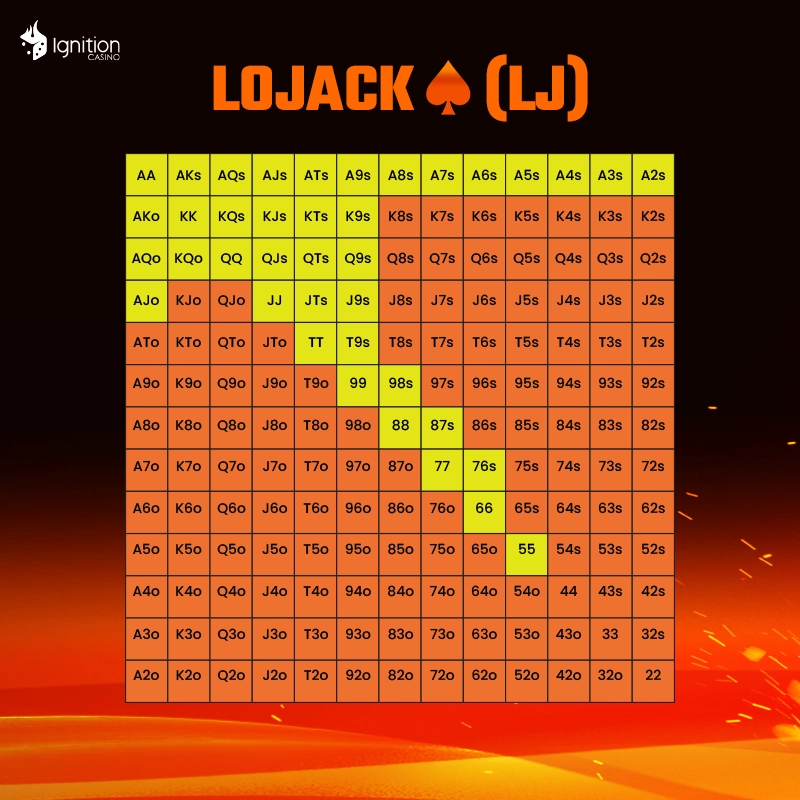
In the middle positions, you have a slightly better advantage since you’ve witnessed the actions of some players. You can broaden your starting hand ranges a bit; however, it is still important to exercise caution. In addition to the recommended hands for early positions, you can consider playing:
Folding weaker hands like low pocket pairs (2-2 to 7-7), unsuited connectors, and low suited aces (A-2 to A-8) in the middle positions is advisable. When players in late positions fold before the flop, the Lojack and Hijack can adopt a more aggressive post-flop strategy.
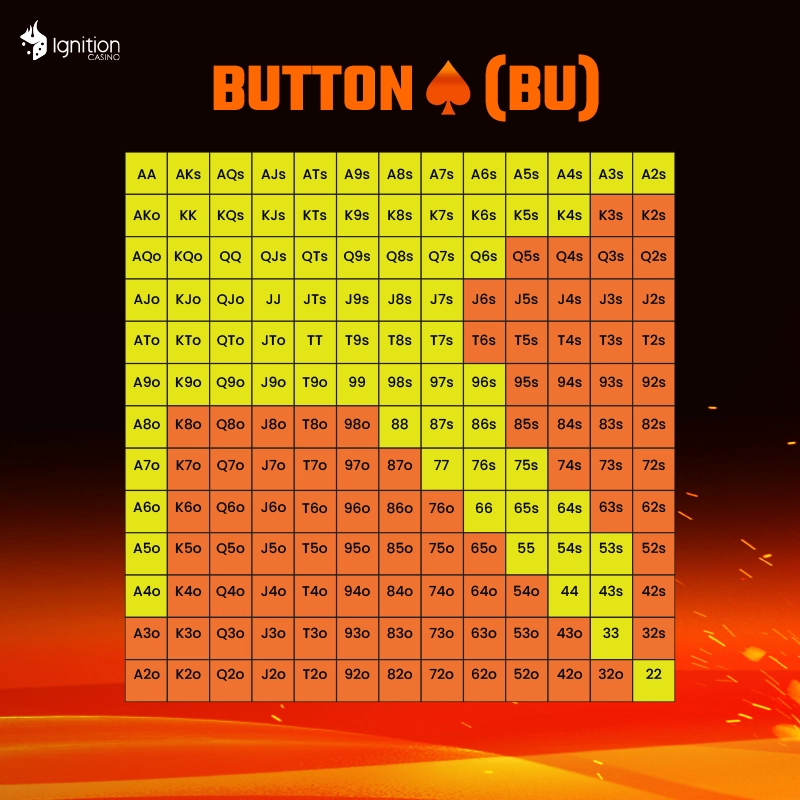
In late positions, most players have already made their decisions. This allows for a wider range of playable hands, such as:
Additionally, broadway cards (10-J+), hands like small suited aces and suited kings can be considered in late positions.
When playing from the small blind or big blind positions, you have already invested chips, and the pot odds may influence your decision-making. It is possible to play a wider range of hands due to the advantageous pot odds, however, SB then BB will be the first to act in the next betting rounds, making those difficult positions to play.
In the blinds, consider playing:
In the big blind, consider also playing hands like suited kings, suited queens, and suited connectors with higher gaps. Adjust your strategy based on the actions of the other players in those positions.
After learning the poker hand rankings new poker players often ask which hands they should play. While there is no universal answer to this question, as the value of starting hands depends on several factors, there are certain hands that are generally considered better than others. In this regard, starting hands can be roughly grouped according to their decreasing value, which we will discuss.
Best starting hands in poker usually include big pocket pairs and big connectors. You can find poker starting hands ranking below. These pairs are known are premium pairs:

This is obviously the upper level of starting hands. If we were always dealt only these hands, then we would make a huge amount of money. In fact, if you were to fold all but these premium hands, it's fair to assume that you would win money over the course of the game. However, this approach will only work at smaller stakes. More experienced players will quickly catch up to this strategy.
In general, the following groups are recognized the most in the poker community:
While small and medium pocket pairs may seem appealing, they are mostly valuable in multi-way pots. Aggressive play with pocket pairs can be effective, especially if there are low-value cards on the board, but the chances of making a set (three of a kind) are only 12% making it difficult to win showdowns if your hand did not improve.
Small and medium pairs can be profitable in the long run if several opponents limp into the pot, allowing for a cheap attempt at hitting a set. Alternatively, if an opponent has a large stack, hitting a three-of-a-kind presents an opportunity to win a big pot (cf implied odds).
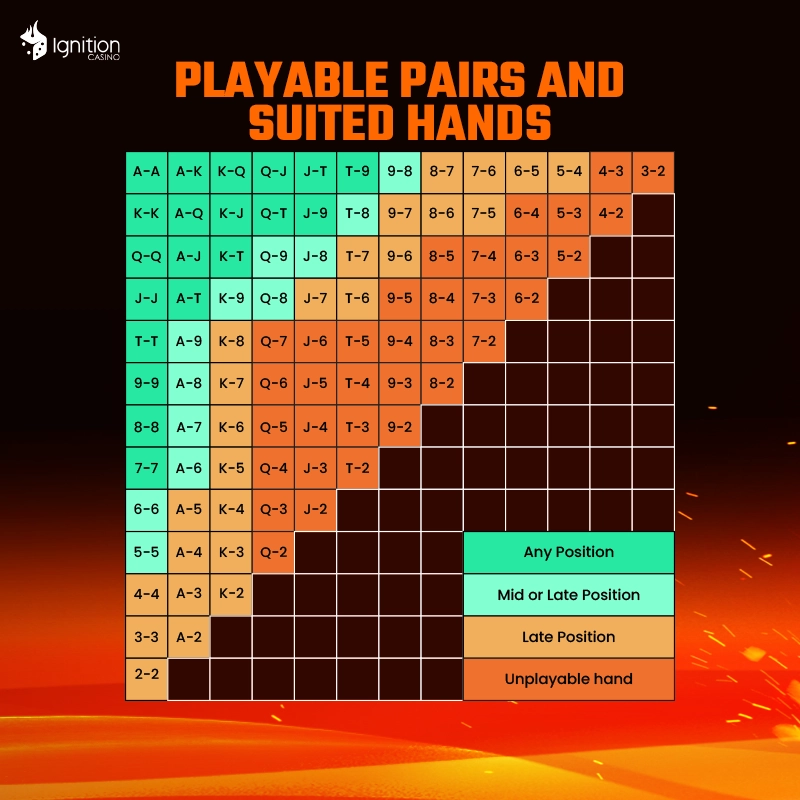
Suited starting hands are highly valued in poker because they have the potential to make strong flushes and straights. Hands of the same suit increase the chances of making a Flush, although it only happens in 0.8% of hands on the Flop. However, 11% of the time, a Flush Draw will be available.
High-suited connectors are very valuable as they offer the possibility of obtaining strong pairs but are even more valuable because of the added potential to obtain a Straight and Flush simultaneously. Suited connectors are more promising than off-suit connectors or suited cards that are not adjacent in rank.
It's also worth noting that they are less “obvious” to read and can create extremely valuable situations. However, they should not be played too loosely and should be folded quick when they don't connect with the board.
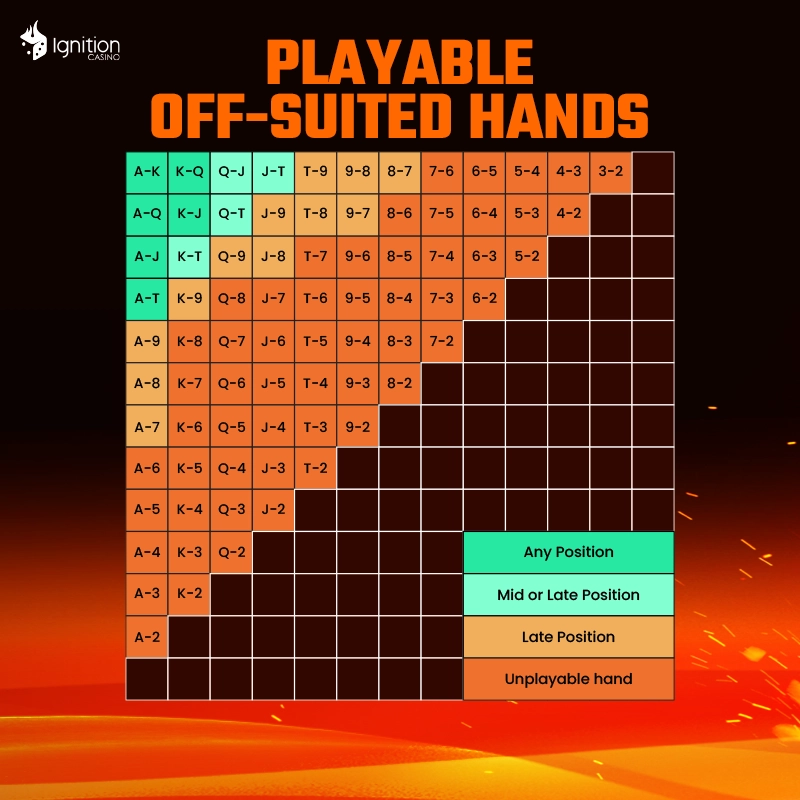
Off-suited hands are one of the most common types of starting hands in poker. They consist of two cards of different suits, and they are usually weaker than their suited counterparts. Although off-suit unpaired cards may not seem like strong starting hands, they can still be valuable, especially when playing in position. These hands are often used as "workhorses" in poker, allowing players to make profitable plays and earn consistent winnings over time.
Therefore, it's important not to underestimate their value especially when playing on the button or in other favorable positions.
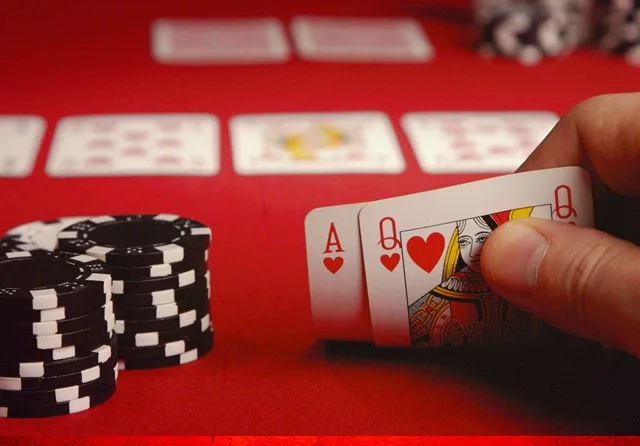
The value of getting an Ace in poker depends on the accompanying card. While AK, AQ, and AJ are some of the strongest starting hands, not all Ace combinations are considered good.
This is because the second card (kicker) plays a crucial role in determining the strength of the hand. In the event that both players have an Ace, and an Ace falls on the board, the one with the higher second card typically wins. Additionally, the higher the face value of the second card, the greater the potential for obtaining a Pair.
Lastly, having a Ten or higher as the second card increases the chances of making a Broadway Straight. Aces with small or medium kicker are usually not recommended in early or middle positions at a full table, but may be played aggressively in a one-on-one game (Heads-Up).
The best starting Texas Holdem poker hands are called premium hands. While the definition of a premium hand varies from one poker expert to the next, a solid core of hands that are considered the best by everyone are AA, KK, QQ, AK, and JJ. Four of these five hands often won’t improve on the flop, so it’s important to seize the advantage early in the hand by raising pre-flop. Raising forces most of your opponents to fold, reducing the number of hands that can improve on the flop and beat your pocket pairs. If you are a novice player, we recommend you learn Hold’em hands and start with playing only these top 10 starting hands to gain experience and confidence.
In poker, starting hands can be classified as connected or not connected and suited or off-suited. A suited hand is one in which all of the hole cards are of the same suit, such as the ace and king of spades. An off-suited hand, conversely, is one in which the cards are of different suits, such as the ace of hearts and the king of clubs. A connected hand gives the possibility to hit a straight when “connecting” with the board.
Suited hands are generally considered more valuable than off-suited hands because they have the potential to form flushes.
The order in which players make decisions during a hand is determined by their position relative to the dealer (or button).
Players in early position must act before those in later positions, and this can significantly impact the decisions they make during the hand. For instance, players in early position typically require stronger starting hands since they will face more players acting after them.
In a 10-player table, there are ten different positions, divided into four groups: early, middle, late, and blinds.
Players in later positions have more information to work with and can afford to play weaker hands. In contrast, players in earlier positions typically require stronger starting hands since they will face more players acting after them.
Pocket pairs are two cards of the same rank, dealt to a player as their hole cards. Those are particularly valuable if the player manages to hit a set (three of a kind) on the flop, turn, or river.
Although off-suit unpaired cards may not seem like strong starting hands, they can still be valuable, especially when playing in position and other players profiles.